Abstract
An analysis of fluid mechanics and diffusion in the gallbladder predicts that there is a thin layer of high bile-constituent concentration near the gallbladder wall. Cholesterol may precipitate in this layer, even when the average cholesterol concentration in the gallbladder is below saturation. The amount precipitated increases with time, with increased average cholesterol concentration, and with decreased average lecithin concentration. If the gallbladder does not empty completely, the precipitated cholesterol particles may grow over many cycles of gall bladder filling and emptying. The analysis explains why cholesterol-gallstone formation is not correlated with bile-constituent concentration alone, why a flaccid, noncontractile, gallbladder has a greater chance of forming gallstones, why small stones are frequently found near the gallbladder wall, and why stones may be found in only one limb of a double gallbladder.
Full text
PDF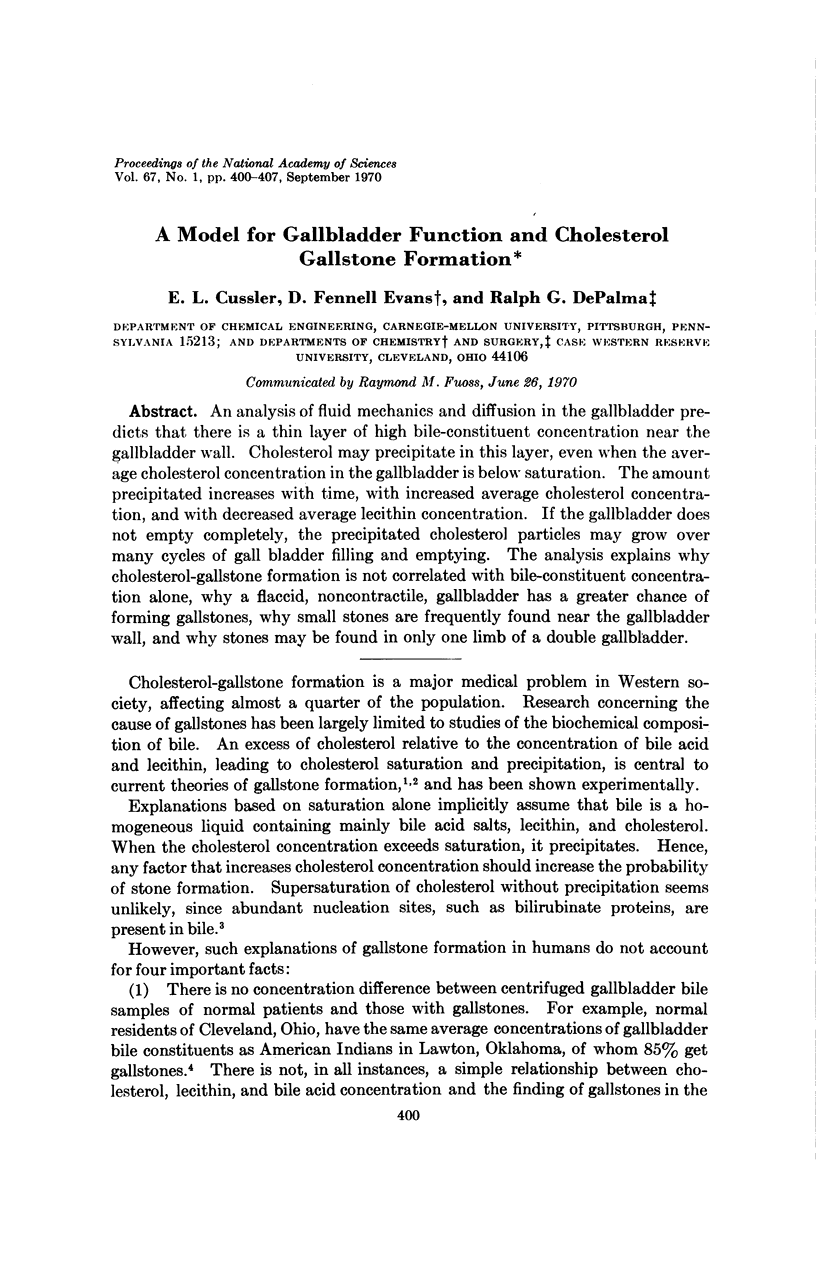
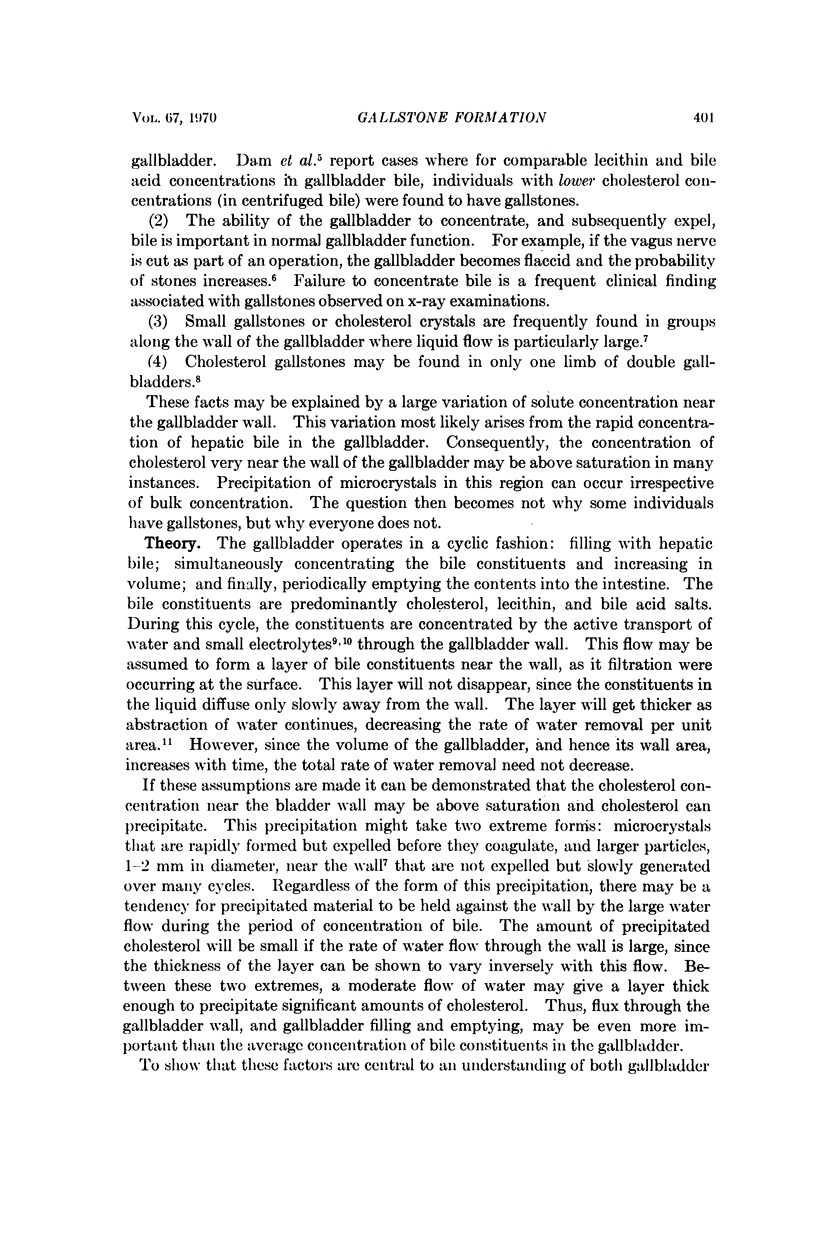
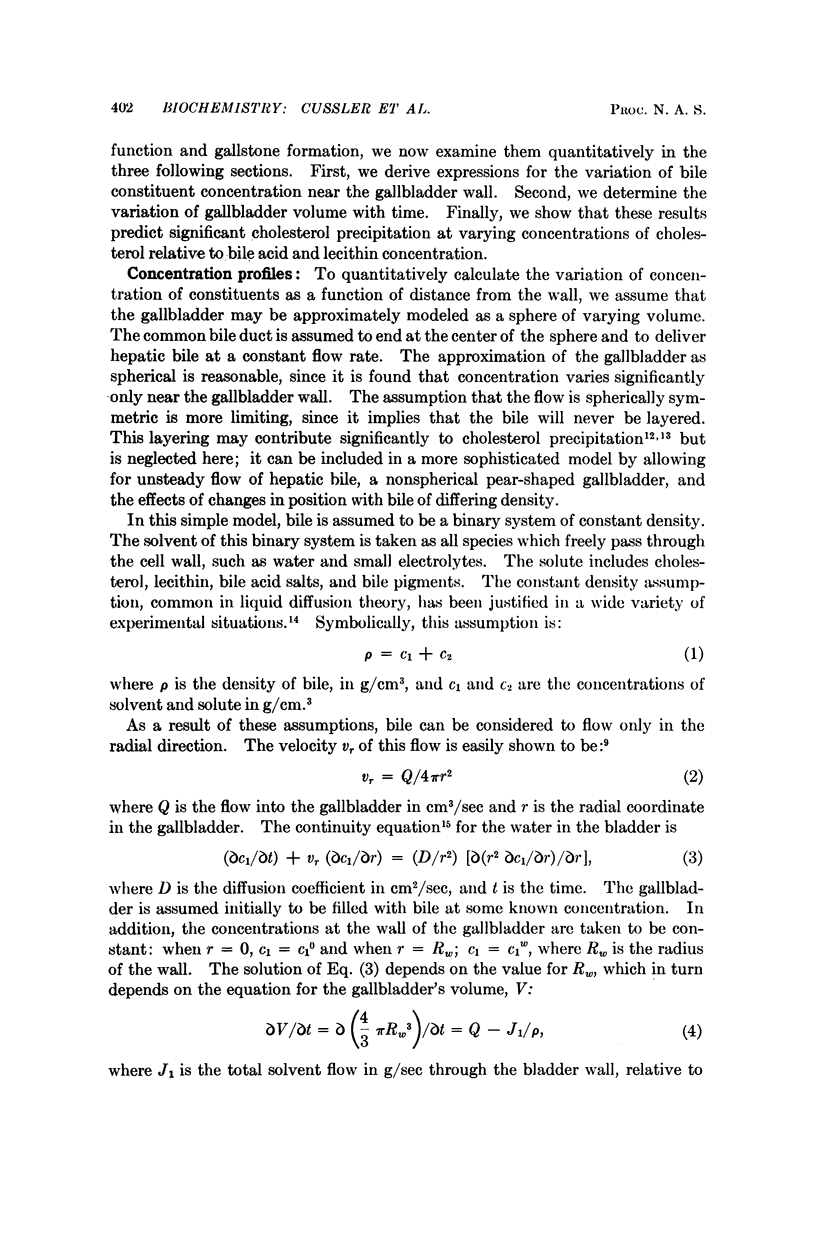
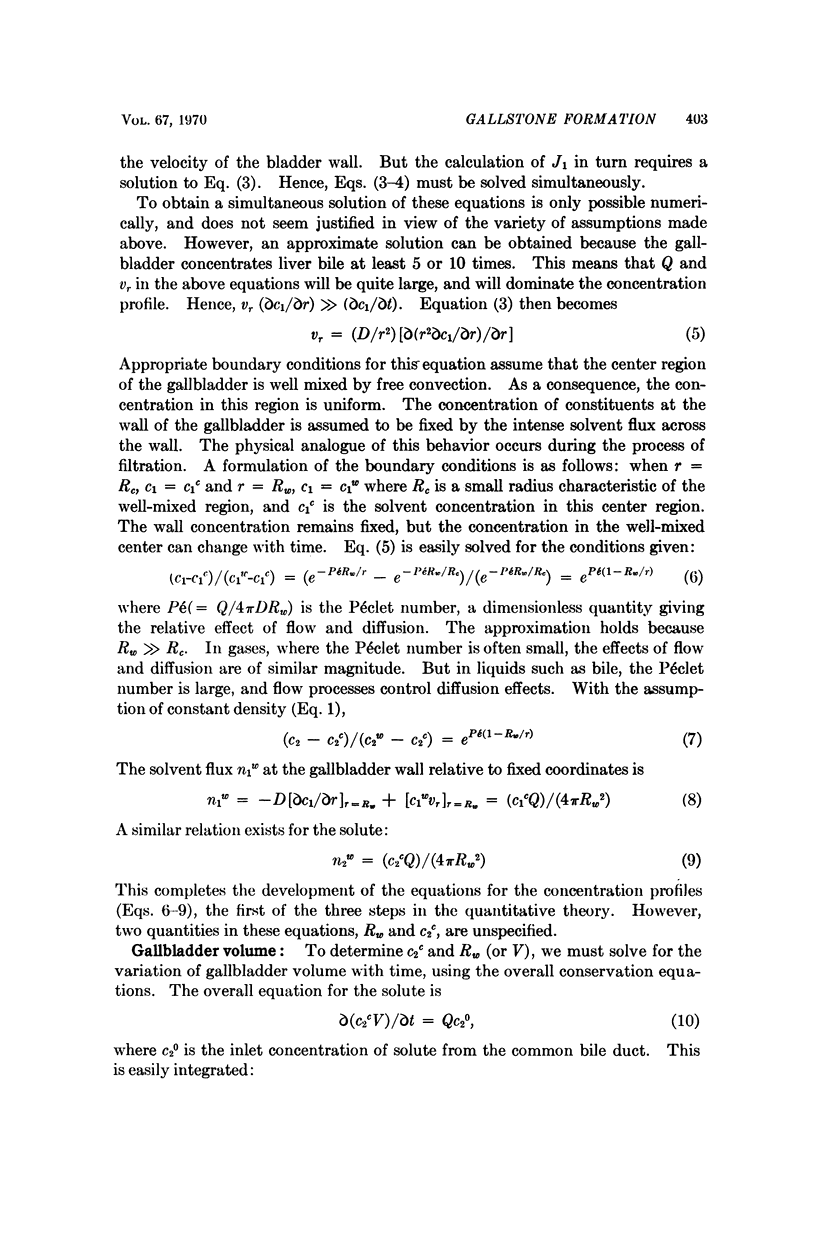
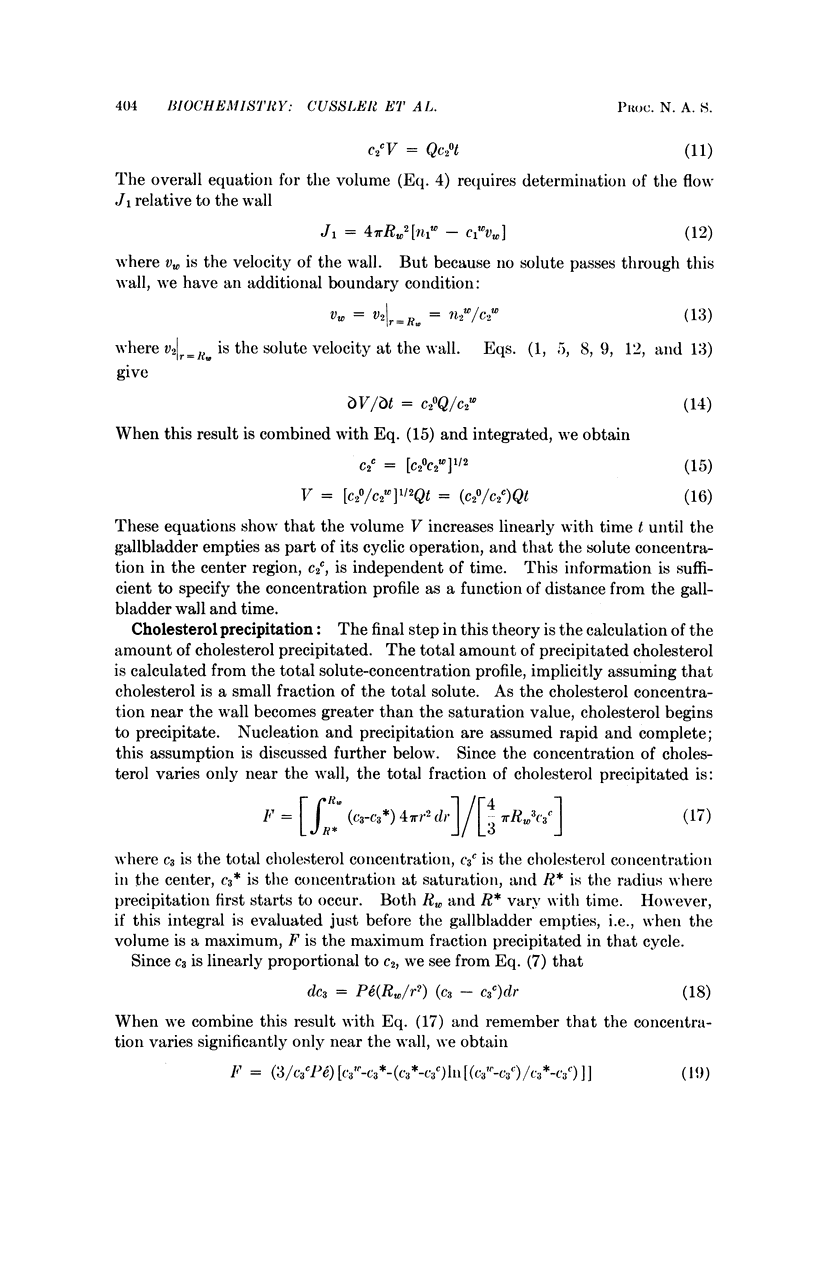
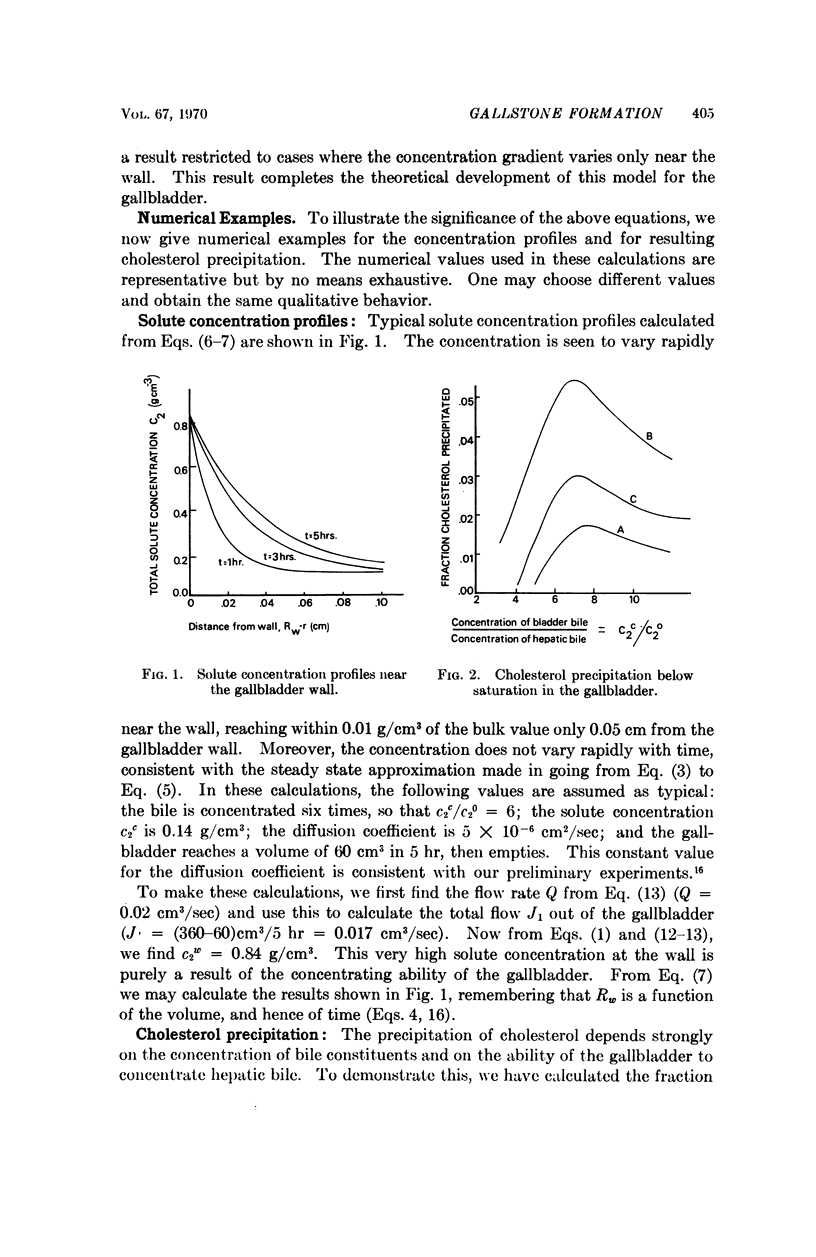
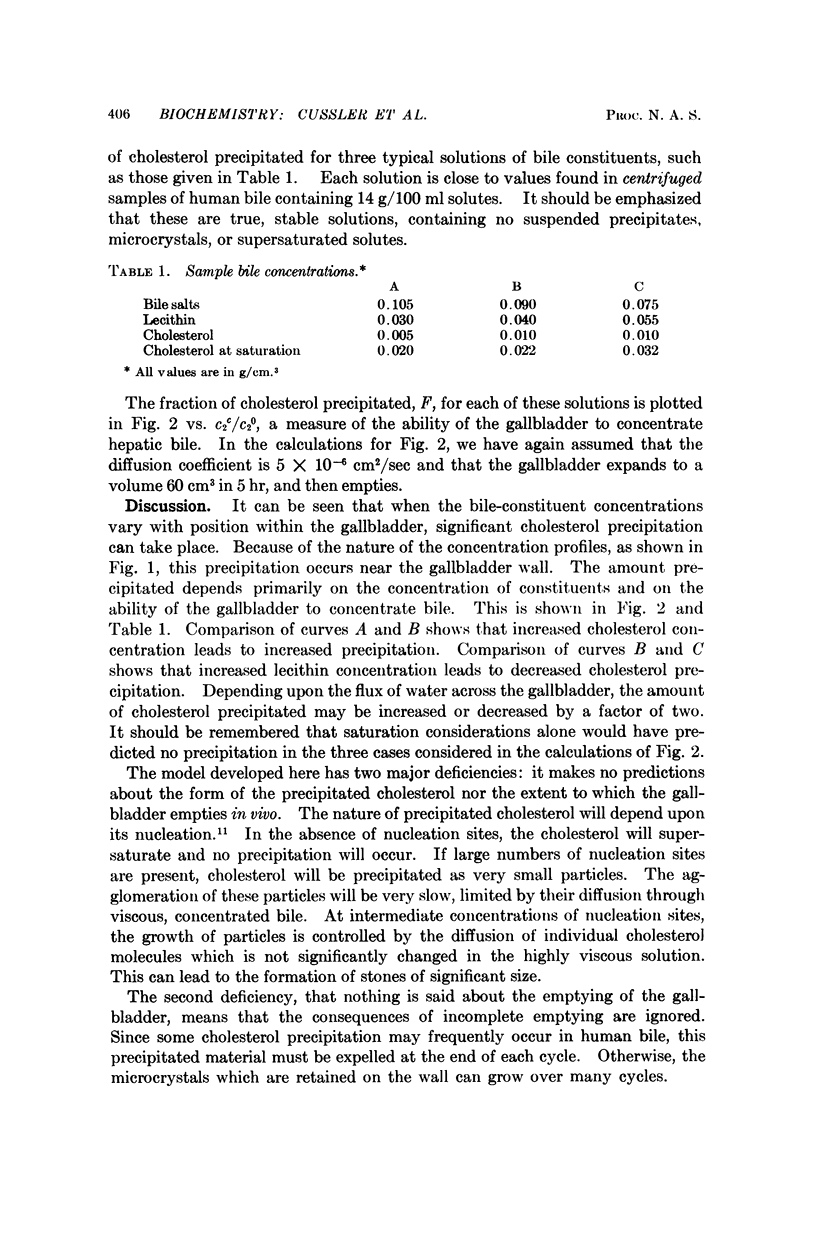
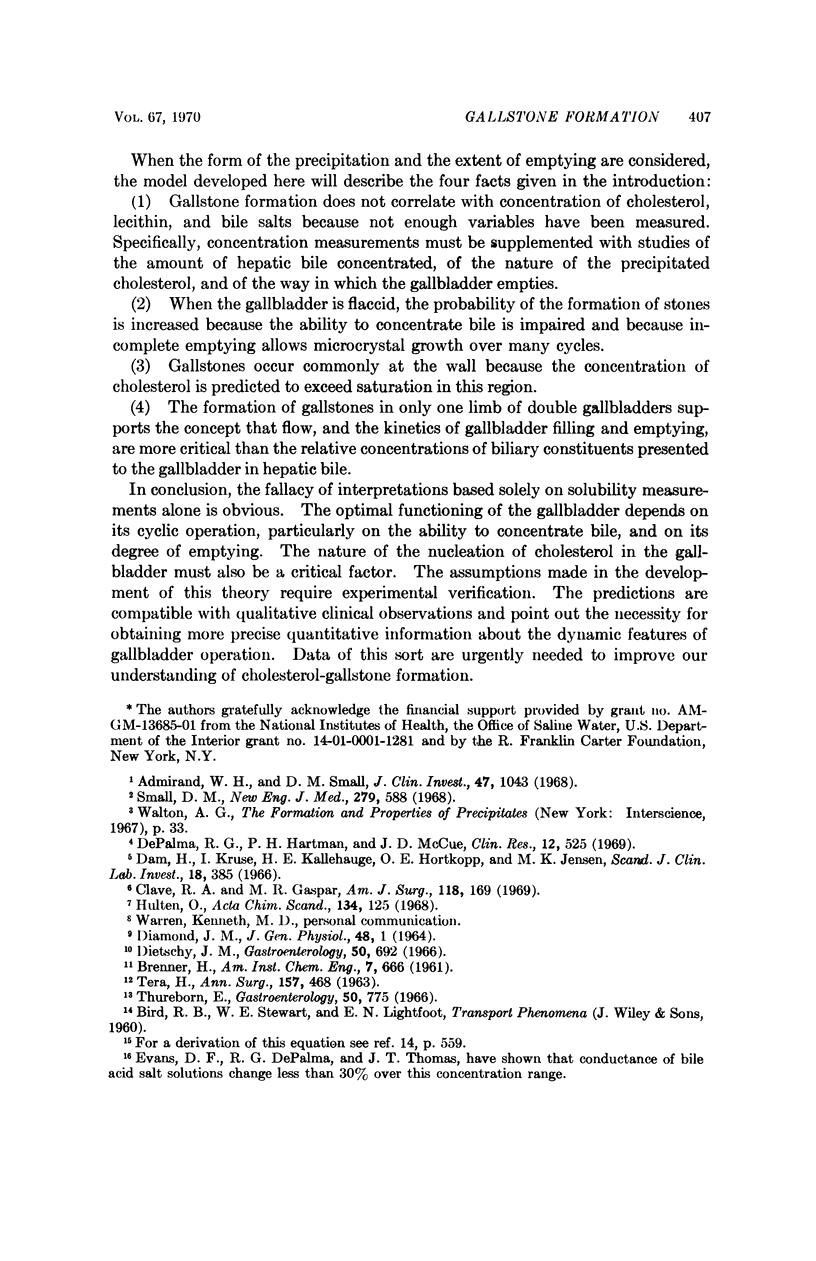
Selected References
These references are in PubMed. This may not be the complete list of references from this article.
- Admirand W. H., Small D. M. The physicochemical basis of cholesterol gallstone formation in man. J Clin Invest. 1968 May;47(5):1043–1052. doi: 10.1172/JCI105794. [DOI] [PMC free article] [PubMed] [Google Scholar]
- Clave R. A., Gaspar M. R. Incidence of gallbladder disease after vagotomy. Am J Surg. 1969 Aug;118(2):169–176. doi: 10.1016/0002-9610(69)90116-0. [DOI] [PubMed] [Google Scholar]
- DIAMOND J. M. TRANSPORT OF SALT AND WATER IN RABBIT AND GUINEA PIG GALL BLADDER. J Gen Physiol. 1964 Sep;48:1–14. doi: 10.1085/jgp.48.1.1. [DOI] [PMC free article] [PubMed] [Google Scholar]
- Dam H., Kruse I., Kallehauge H. E., Hartkopp O. E., Jensen M. K. Studies on human bile. I. Composition of bladder bile from cholelithiasis patients and surgical patients with normal bile compared with data for bladder bile of hamsters on different diets. Scand J Clin Lab Invest. 1966;18(4):385–404. doi: 10.3109/00365516609113159. [DOI] [PubMed] [Google Scholar]
- Hultén O. Formation of gallstones. I. Acta Chir Scand. 1968;134(2):125–130. [PubMed] [Google Scholar]
- Small D. M. Gallstones. N Engl J Med. 1968 Sep 12;279(11):588–593. doi: 10.1056/NEJM196809122791106. [DOI] [PubMed] [Google Scholar]
- TERA H. Sedimentation of bile constituents. Ann Surg. 1963 Mar;157:468–472. doi: 10.1097/00000658-196303000-00019. [DOI] [PMC free article] [PubMed] [Google Scholar]
- Thureborn E. On the stratification of human bile and its importance for the solubility of cholesterol. Gastroenterology. 1966 Jun;50(6):775–780. [PubMed] [Google Scholar]


